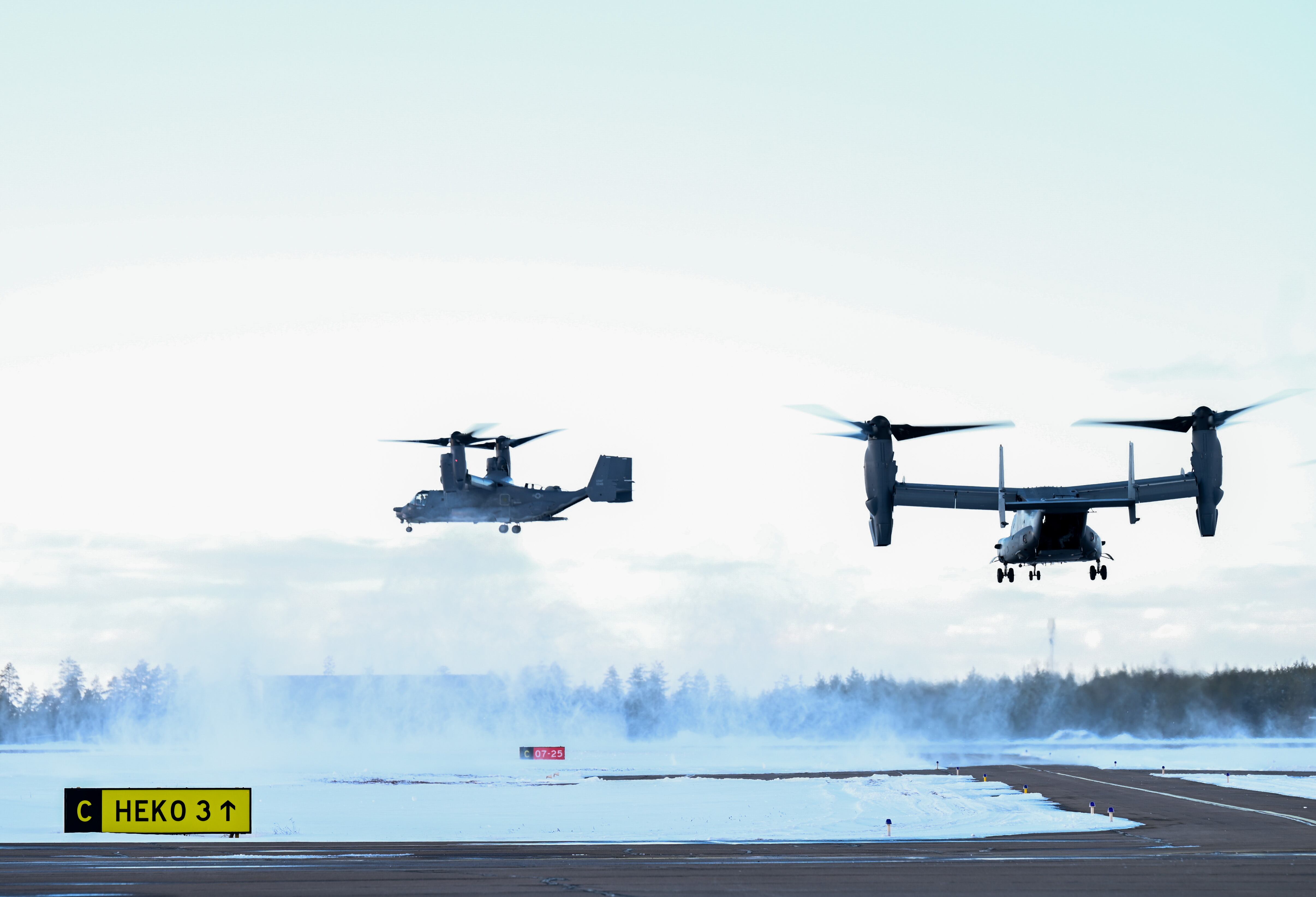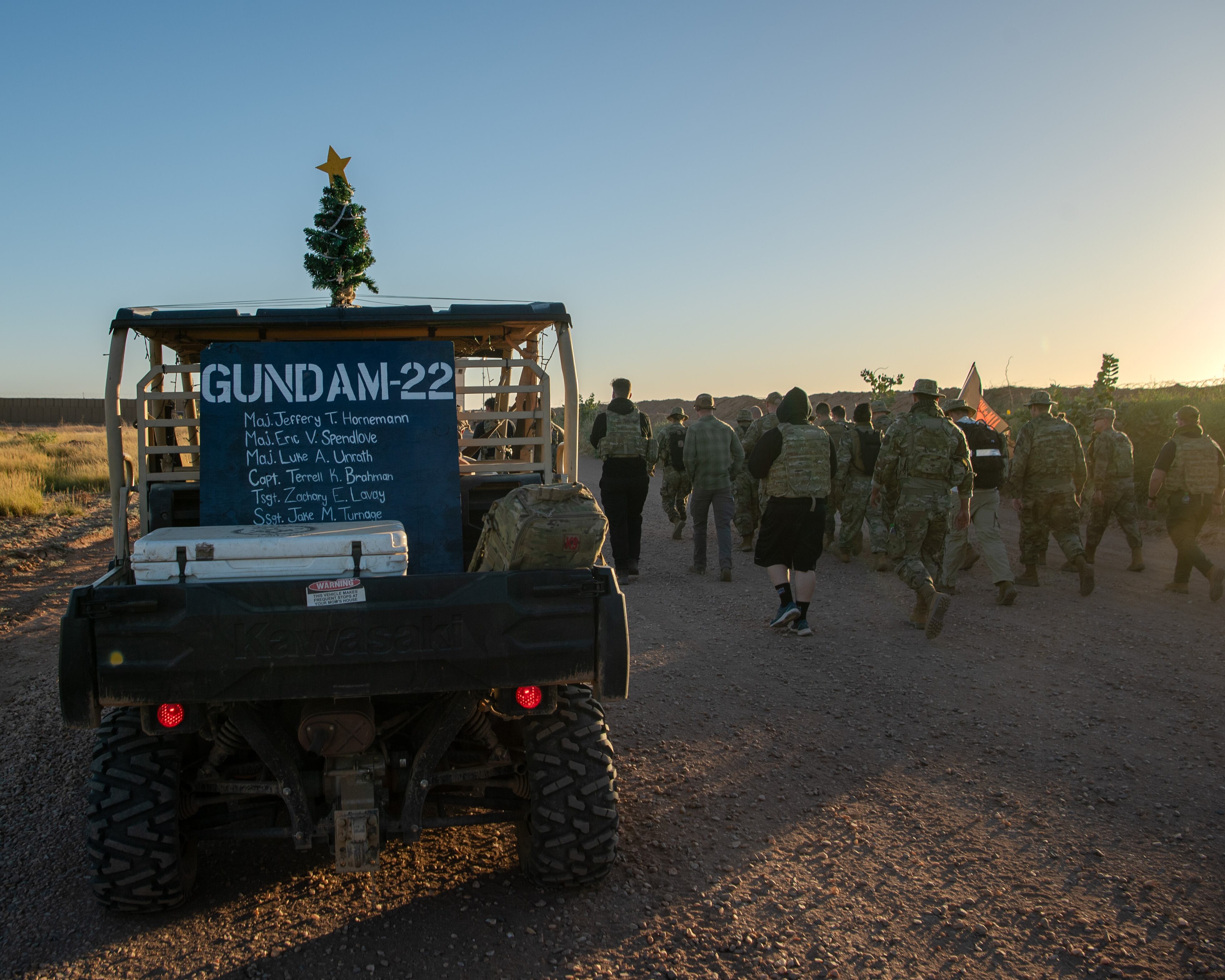AURORA, Colo. — The Air Force still isn’t sure when it might resume flying the CV-22 Osprey, more than two months after an Osprey crash that killed eight special operations airmen off the coast of Japan spurred the U.S. military to ground hundreds of the tiltrotor aircraft.
Air Force investigators are continuing to probe the Nov. 29 crash in parallel with a comprehensive review of whether the service’s Osprey force is properly trained and equipped to fly safely, Air Force Special Operations Command boss Lt. Gen. Tony Bauernfeind told reporters at the Air and Space Forces Association’s Air Warfare Symposium here Tuesday.
RELATED

While Bauernfeind offered no additional clues into what may have caused the accident, the Pentagon’s Joint Safety Council said earlier this month it was working with the Air Force, Marine Corps and Navy to return their Ospreys to service.
Bauernfeind said he is in weekly conversations with leaders from the sister services to determine the path forward to flight, adding that flights will only resume after he has full confidence in training, crews and the platform, as well as measures in place to mitigate future issues.
“What is the information we need to now put the appropriate risk mitigations in place to move forward?” he said. “Just because we’re having those conversations does not mean that we have the information we need yet.”
The U.S. military grounded its fleet of around 400 Ospreys — about 50 of which belong to the Air Force — on Dec. 6 as the mishap investigation got underway. Japan also stopped flying its own 14 Ospreys after the accident.
The tiltrotor aircraft is known for its towering nacelles that allow it to launch and land like a helicopter, and speed forward like a fixed-wing plane. Air Force special operations units use the CV-22 to navigate into and out of areas where fixed-wing planes may not be able to land with troops and supplies. Each Osprey can carry about three dozen troops or 10,000 pounds of cargo.
While it remains unclear what downed the American CV-22 in November, the Air Force has said that an aircraft malfunction — not a mistake by the crew — likely caused the crash. The Associated Press reported earlier this month that the Pentagon believes it has identified the cause but has declined to divulge the information as further analysis is underway.
Four fatal Osprey crashes, including the latest mishap, have claimed the lives of 20 American troops since March 2022. It also marked the first fatal incident involving an Air Force-owned CV-22 since 2010, and the service’s deadliest accident since 2018, when nine Puerto Rico Air National Guard troops died in a WC-130 weather reconnaissance plane crash.
The Air Force grounded its Osprey fleet for two weeks in 2022 following back-to-back “hard clutch” incidents, after the aircraft’s clutch temporarily slipped and then re-engaged. The move unevenly distributes power to the aircraft’s massive rotors and can cause it to lurch. One of those hard clutch problems caused a June 2022 crash that killed five Marines.
RELATED

Bauernfeind said commanders around the globe have “leveraged other joint force capabilities” to meet their daily operational needs, but did not say how.
“There is a strong desire to return to fly because it is a capability we want to have,” he said. “But we want to be able to return to fly with as much knowledge as we possibly can, so that we can ensure that we’re safely taking care of our crews.”
Navy Rear Adm. Chris Engdahl, chairman of the Joint Safety Council and head of Naval Safety Command, told the Associated Press that commanders across the services may need to gather input on how long troops would need to spend in simulators to get ready to fly again, and what maintenance each Osprey needs before resuming operations.
“The Air Force and Marine Corps have been running the Osprey’s engines; the Marines have been conducting ground movements to keep the aircraft working,” the AP reported.
The Air Force announced Jan. 11 it had called off the weekslong, multinational search effort that recovered all but one of the Osprey’s downed crew members.
The service held a memorial for the fallen airmen earlier this month at Kadena Air Base, Japan, where two of the Osprey’s crew members were assigned. A larger memorial is planned for Thursday at Japan’s Yokota Air Base, where the downed crew was assigned to the 353rd Special Operations Wing.
Courtney Mabeus-Brown is the senior reporter at Air Force Times. She is an award-winning journalist who previously covered the military for Navy Times and The Virginian-Pilot in Norfolk, Va., where she first set foot on an aircraft carrier. Her work has also appeared in The New York Times, The Washington Post, Foreign Policy and more.





